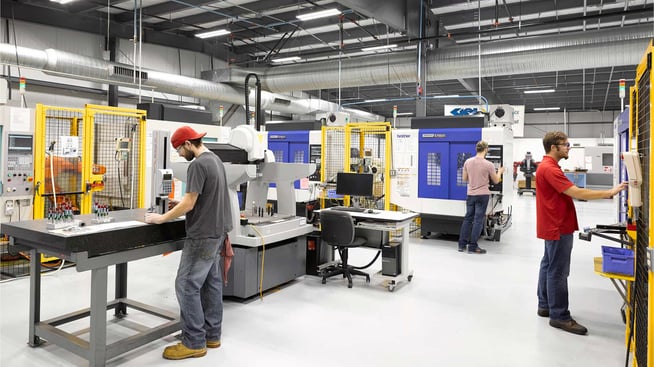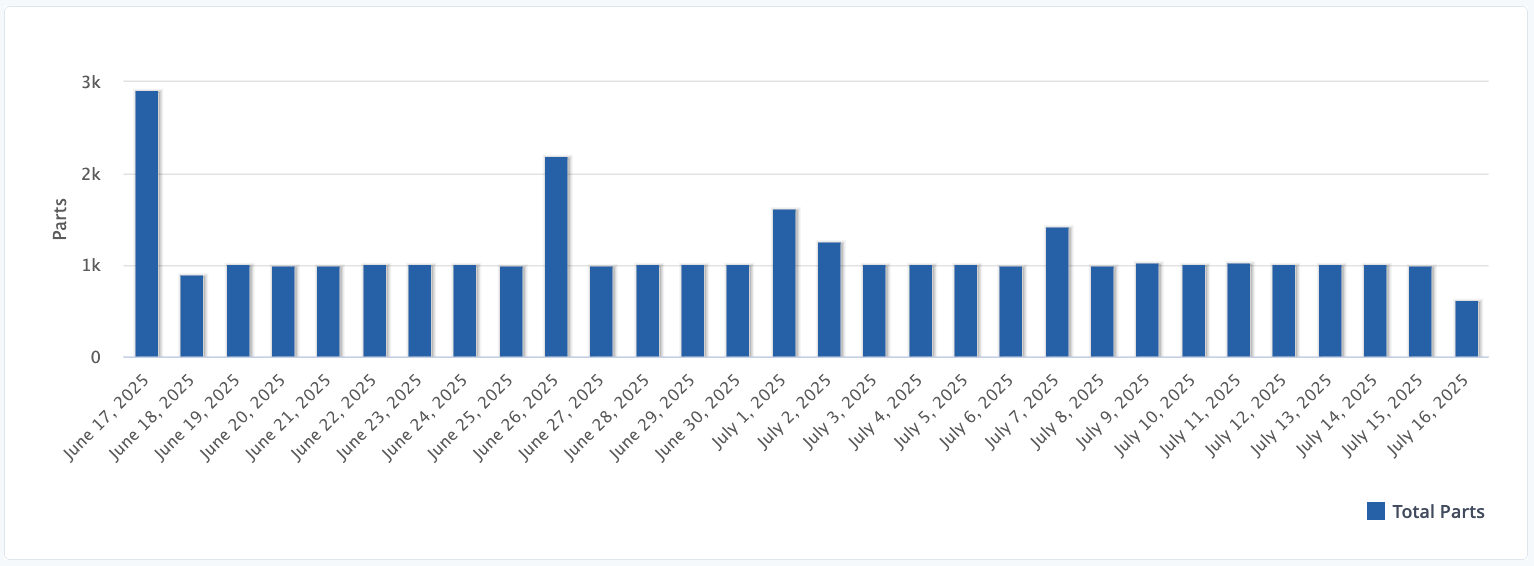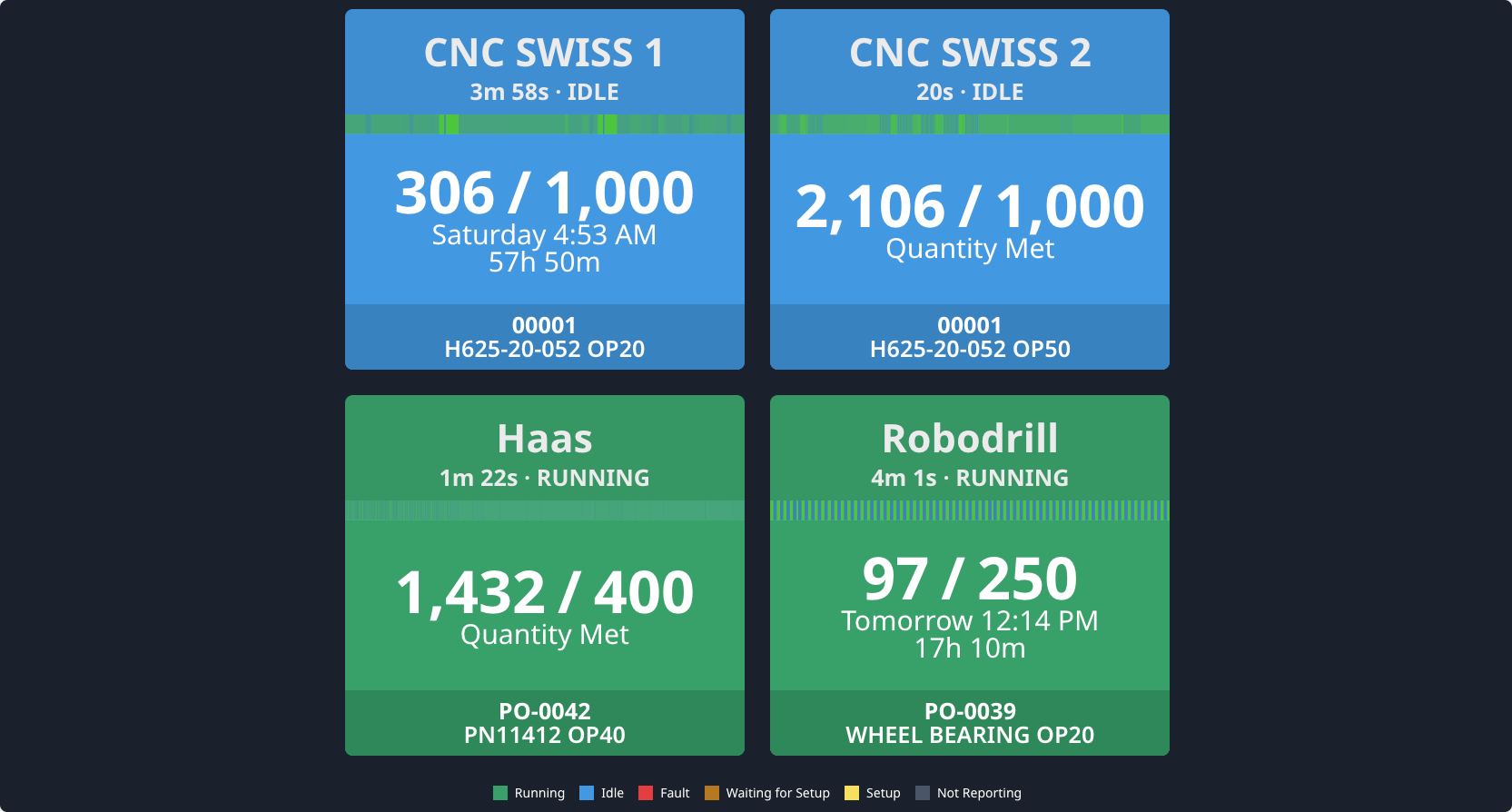One of the most important trends in the last few decades has been the movement toward lean manufacturing. As companies began to review and change their operating procedures to eliminate waste, efficiency reached new heights across most industries when it was deployed. But while lean remains a valuable tool for improving and maintaining efficiency, there comes a point in any lean program where additional Kaizen events yield smaller and smaller results in terms of bottom line value because waste has been largely eliminated throughout the manufacturing system.
In these instances, it is possible that the ability to further improve efficiency and lower cost in the system is inhibited. Either lean initiatives have removed so much waste that the level of control and manipulation of system processes for further gains requires a high degree of automation and analytics. Or, the lean manufacturing system as applied to a complex manufactured product has removed so much waste that the drill down to additional gains is exceedingly complex. In both cases, the possibility for additional improvements and gains has reached a point where it cannot be accomplished by human hands, intuitive human analysis and “gut-feel”.
As Industry 4.0 and the Industrial Internet of things (IIoT) has gained steam over the last few years, many people are realizing that to continue adding additional efficiencies and process improvements, data capture, analytics and connected devices will be required to move forward. Many even view IIoT as the next logical step in lean, as a move toward “Digital Lean” in manufacturing. But in traditional lean, processes are reviewed and improved by department or functional area and can be episodic or insular as a result. One key advantage that IIot, big data and advanced analytics has is that it can provide systemic interoperability between departments that support manufacturing and in doing so, improvements accrue to manufacturing in the form of cost improvement and added efficiency. In addition, the two support areas where this is most applicable are supply chain and equipment maintenance.

Transitioning from Preventive Maintenance
Most modern manufacturing has built maintenance efforts around preventive maintenance. In preventive maintenance, equipment is maintained on a schedule over time using inspections, calibrations, repairs and other regular service checks to reduce the chances of failure in the future. It has been an important tool and a critical part of both lean and non-lean manufacturing for many years, allowing some predictability compared to “repair as you go” maintenance schemes. But just as improvement methods have reached a barrier where human intervention can no longer drive improvements, so too has preventive maintenance reached an impasse as well.
For one, preventive maintenance is based on statistical modeling and broad averages to suggest when maintenance should be undertaken. Because maintenance is done whether it is needed or not, it is ineffective in identifying problems between maintenance cycles. These statistical models are most often developed by the OEMs that supply the equipment. And while there may be some subdivision of suggested preventive maintenance available based on experience of the OEM, preventive maintenance does not answer real world and real time situations. In real world applications, true maintenance requirements may be based on many different variables. The result in differences in factory environments such as ambient conditions like temperature and humidity, or in cases where a manufacturer may use heavy or abrasive material to manufacture its products whereas other manufacturers using the same equipment may use light or non-abusive materials, means the true maintenance requirements will vary greatly.
A second shortcoming of preventive maintenance and its reliance on probability rather than actuality is that at its best, predictive maintenance can only mitigate probability impact and the chance that something “might” happen. It is incapable of predicting what will happen or what is happening now. This inhibits maintenance managers and other decision makers from being able to manage maintenance efforts to optimize a program in support of improved efficiency and cost savings. As a result, preventive maintenance is labor intensive and reactive. To realize additional improvements and fully optimize the system, IIoT offers a way forward with predictive -rather than preventive - maintenance.
Transition to Predictive Maintenance
Also known as Conditions Based Maintenance (CBM), predictive maintenance relies on installed or embedded devices to monitor a machine’s actual condition. Through use of machine learning and advanced analytics and AI, maintenance strategies can be developed that deploy maintenance resources only when sensors or monitors show signs of impending failure. Depending on the type of equipment and device, in many cases adjustments can be automated for minor adjustments during run time until full repair can be made on the next scheduled downtime cycle. Decisions and actions are based on real-time data to identify problems proactively and is also conducted when maintenance or tech involvement is most cost effective such as changeovers, or scheduled downtime.
By utilizing IIoT technology to deploy predictive maintenance, strong gains can be made that both reduce costs and allow manufacturing to achieve higher efficiencies than those possible with traditional preventive maintenance. Studies show that when used, predictive maintenance programs can increase overall productivity by 25%. Further, downtime can drop as much as 75% and overall maintenance costs can be reduced by 25% as well. Areas where these gains can be measured include:
- Prediction and Prevention – Using sensors in conjunction with analytical software with machine learning algorithms, predictive analytics can be performed to forecast trouble areas and identify needed repairs before failure occurs. By measuring variables such as temperature, product flow and other critical components in real-time, failure can be detected ahead of time. It can also be matched and analyzed based on the same or similar components on other machines to develop overall strategy to guide parts purchasing and inventory levels for spares.
Service providers in IIoT also have robust analytics that can be applied to automate many adjustments when equipment allows. In other instances, automatic alerts can be sent to maintenance staff to alert the need for a repair during an upcoming changeover cycle if the failure is not imminent. This level of prediction and intervention reduces wasted labor that has accompanied traditional maintenance schemes.
- Optimized Maintenance Routines - Labor among maintenance and technical staff is often higher cost compared to other manufacturing functions. And in traditional preventive maintenance programs, much of this labor is wasted in the form of prep, staging and prioritizing tasks. It is also wasted because these tasks are not coordinated between other ongoing maintenance within the factory other than at a general level.
With predictive maintenance, staff maintenance routines can be optimized. Using data and software repair parts, supplies and consumables can even be ordered, inventory relieved and material staged in advance of the scheduled repair. This can be taken down to the tool level so that the technician carries only what they need for the repair saving time and reducing strain. One key gain in an optimized routine is that by using sensors to monitor the failure and pinpoint its cause and location within the machine, guesswork in locating which part or component needs repair is removed from the process allowing technicians to zero in on the part quickly and with the least amount of time required for the repair.
- Parts Inventory – With preventive maintenance, the same statistical analysis used to broadly define what should be maintained is often used to determine what parts to store. This is a costly process as stockroom supplies of spare parts may over or under order spare parts and in some cases, both may occur. Over ordered spares tie up cash and affect cash flow for parts that move slowly. Under-ordered parts may result in costly added downtime or expensive expediting.
Using predictive analysis and machine learning, parts supply levels can be honed over time to reflect actual real-time usage. And as part of the entire overall IoT ecosystem, ordering, tracing and inventory relief and reordering can be tied into purchasing and automated to support a lean and exact inventory level. This allows maintenance strategies to be built custom to a factory’s trends to account for equipment age, heavy or light product mix, inherent ambient conditions and a host of other variables that would not be possible to account for in human based analysis.
Holding onto Gains
Studies have shown that in traditional preventive maintenance programs, almost 50% of every dollar spent is wasted. Through lack of analytical capability and reliance upon statistical modeling, these programs build waste into the system. Further, additional data exists that show in most manufacturing preventive maintenance programs, only 18% of equipment assets have age-related failure patterns which make the program efforts highly inefficient.
By using the same IoT devices, data and software used to drive production and supply chain improvements, manufacturing maintenance can develop comprehensive strategies to address all the failings above. IIoT service providers offer robust analytics as well as device sourcing, installation and service. This allows a maintenance program to contribute to optimized uptime and asset longevity in direct support of core production and efficiency gain.
With IIoT the available data is so large that these gains could not be realized using traditional human decision making. But with the use of advanced analytics, AI, machine learning and device deployment, manufacturing companies can realize these gains and take the next step in the evolution of lean to create a data-driven “digital lean” with a predictive maintenance program tailored specifically to each factory.
Ready to find a predictive maintenance program for your factory? Click here to book a demo.


.png?width=1960&height=1300&name=01_comp_Downtime-%26-Quality_laptop%20(1).png)










Comments